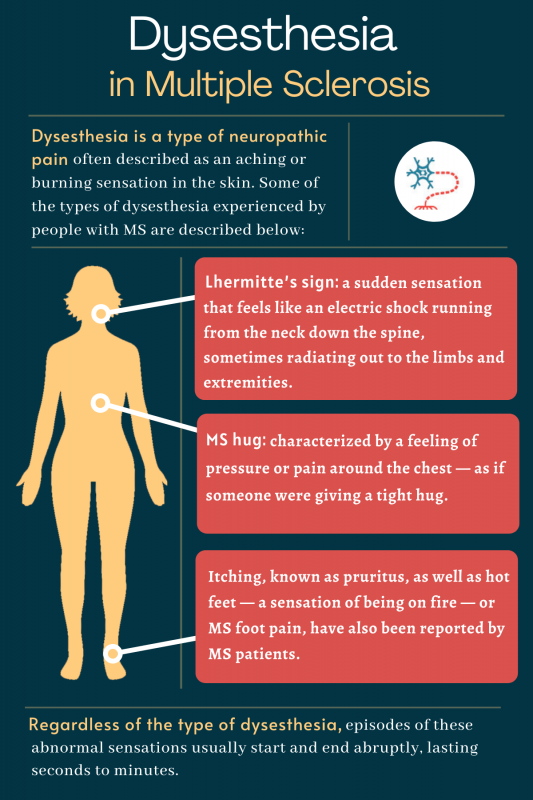
FAQs about dysesthesia in MS
These abnormal sensations are not dangerous themselves. But dysesthesia can be uncomfortable, sometimes painful, and even scary if a person experiences symptoms such as an MS hug for the first time.
Dysesthesia is not life-threatening, but it can interfere with a person’s daily activities, disrupt sleep, and reduce quality of life.
Similar to other paroxysmal symptoms — which appear suddenly, last for a few seconds or minutes, and then disappear — dysesthesia may come and go. Some types of dysesthesias can be chronic (chronic neuropathic pain), persisting for a certain amount of time.
Anxiety and stress can serve as triggers for dysesthesia or exacerbate its symptoms. In some cases, chronic anxiety and stress can increase nerve firing and cause symptoms similar to dysesthesia, without the actual presence of nerve damage.
Dysesthesia is a type of neuropathic pain, or pain that results from nervous system damage. Therefore, neurologists are the best-qualified doctors to treat these abnormal sensations. A primary care physician could be a person’s first contact to discuss dysesthesia symptoms, but if these are serious or interfere with daily life, the patient should be seen by a neurologist.
Related Articles

 Fact-checked by
Fact-checked by 








